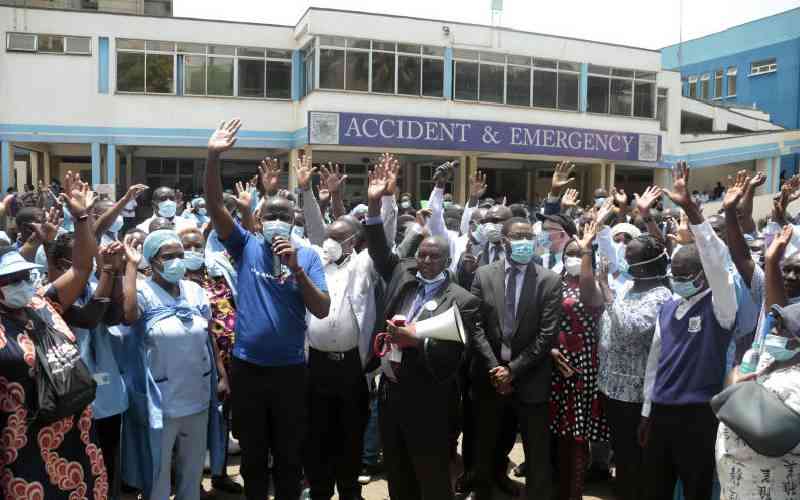Throughout my working life, I have had the opportunity to observe the pharmaceutical industry. I began my career as a doctor with big healthcare firms and now I am the Chief Medical Officer for one of the world’s largest pharmaceuticals.
Over the years I have witnessed how effectively, or otherwise, pharmaceutical firms meet the needs of patients around the world.
When I consider our industry’s activity in Kenya, it is clear to me that while some great progress has been made, pharma companies need to change the way they work with the Government and all other organisations involved in Kenya’s healthcare system.
This is especially if Kenya is to achieve its healthcare goals under Vision 2030 and the constitutional mandate to provide healthcare for every citizen.
Kenya needs a more cohesive healthcare system that sees closer working relationships between the Ministry of Health, healthcare professionals, academics, government, non-government and community organisations.
No single group can improve Kenya’s healthcare system; all these partners need to work together to find approaches that address the needs of patients.
When it comes to improving patient health, we are in it together with the same goal to see healthy, happy people living fuller, more productive lives thanks to healthcare partnerships that provide support to everyone who needs it.
For companies like GlaxoSmithKline (GSK), the journey to address patient needs begins with the medicines we develop. But in the same way a doctor needs to prescribe medicine that is right for a particular patient, so we need to develop medicines that are right for some of the specific needs in Kenya.
For example, Kenya has specific requirements related to medicine formulation, pack size, affordability and capability to be stored and handled safely, including in challenging environments.
This is why it is critical to accelerate support for medical research in Kenya through training and education in relevant subjects, along with increased investment in Kenya’s laboratory and research facilities. We also need to see Kenya’s research community given more access to global innovations through open sourcing of research findings that make the latest knowledge freely available to the country’s science community.
In addition, I would like to see more companies grant licences to generic manufacturers in Kenya to supply versions of their medicines, such as those on the World Health Organisation’s list of essential medicines.
But medicines are just part of the puzzle. Kenya’s healthcare infrastructure needs significant additional investment to meet the needs of its citizens.
For example, we have invested in training healthcare workers – the doctors, community health workers, immunisation nurses and pharmacists whom citizens rely on to stay healthy. Insufficient numbers of trained healthcare workers is a major barrier to patients accessing the right medicines and vaccines. That is not good for anyone.
On the other hand, having trained healthcare professionals providing the right medicines achieves nothing if people cannot afford the medicines they need. This calls for pharmaceutical firms to use appropriate pricing models to ensure that patients can access medicines regardless of their ability to pay.
Our approach is to have a tiered pricing model in which the price Kenya pays for medicine is linked to the country’s Gross National Income per capita, and a further tiered approach to customers serving different socio-economic population segments in Kenya.
Stay informed. Subscribe to our newsletter
Our job is to help people in Kenya to do more, feel better and live longer regardless of where they live or their ability to pay. But we can’t do it alone.
We need all stakeholders who share our vision to work more closely together - trusting more, collaborating more and sharing more – then we will all achieve more for Kenya and provide the foundation of health that the country needs to continue its economic and social development towards 2030.
 The Standard Group Plc is a
multi-media organization with investments in media platforms spanning newspaper
print operations, television, radio broadcasting, digital and online services. The
Standard Group is recognized as a leading multi-media house in Kenya with a key
influence in matters of national and international interest.
The Standard Group Plc is a
multi-media organization with investments in media platforms spanning newspaper
print operations, television, radio broadcasting, digital and online services. The
Standard Group is recognized as a leading multi-media house in Kenya with a key
influence in matters of national and international interest.
 The Standard Group Plc is a
multi-media organization with investments in media platforms spanning newspaper
print operations, television, radio broadcasting, digital and online services. The
Standard Group is recognized as a leading multi-media house in Kenya with a key
influence in matters of national and international interest.
The Standard Group Plc is a
multi-media organization with investments in media platforms spanning newspaper
print operations, television, radio broadcasting, digital and online services. The
Standard Group is recognized as a leading multi-media house in Kenya with a key
influence in matters of national and international interest.







